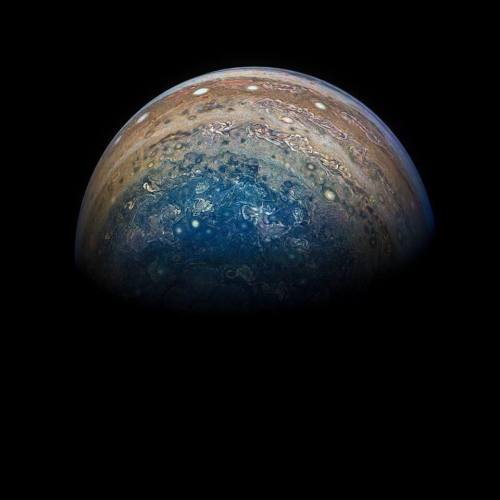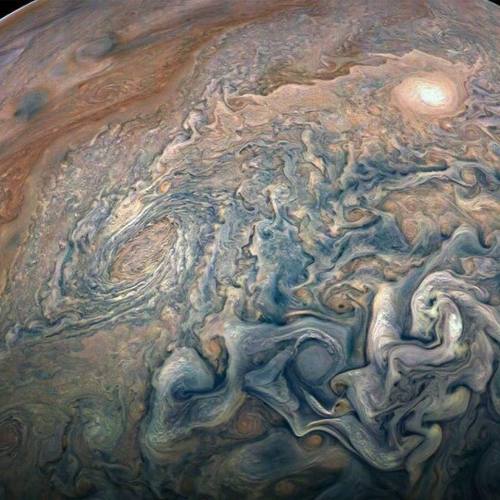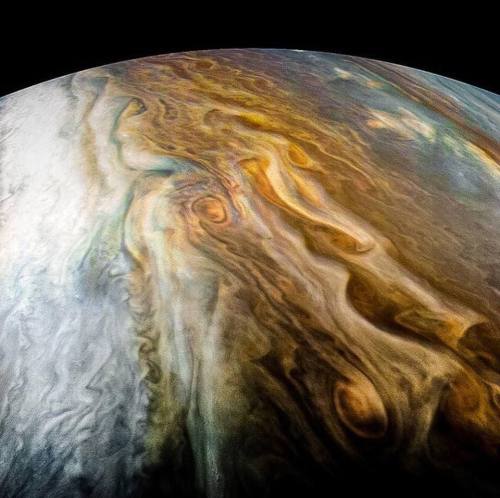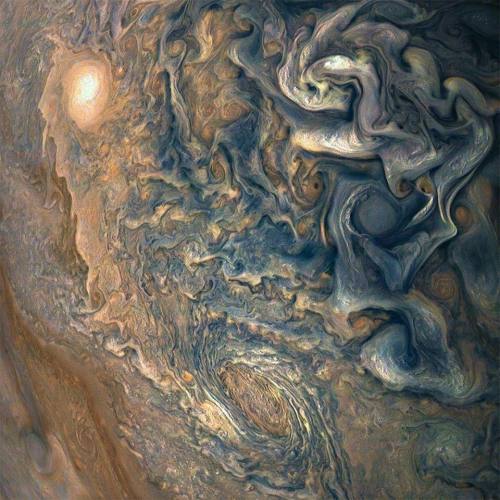The Drum Is Filled With Hot Steam And Then Sprayed With Cold Water. The Pressure On The Outside Of The

the drum is filled with hot steam and then sprayed with cold water. the pressure on the outside of the drum is far more than inside. the pressures try to maintain and find balance taking the drum as a casualty.
More Posts from Science-is-magical and Others

To help me refer my chemistry resources to students who seek help, I made a list of all the chemistry master posts I created in the past. Please enjoy and don’t forget to message me if any other chemistry questions arise or if you found anything in this post helpful!
General Chemistry 101 // Contains helpful websites, practice tests, study guides, and tips.
Steps to Balancing Chemical Equations // A 10 step guide to solving unbalanced chemical equations. Practice problems are provided at the end!
Ideal Gas Laws // A little introduction to the history of ideal gas laws and a breakdown of each equation. Also, it contains resources to learn more about them, practice problems, and a personal tip on how I tackle problems!
Electrochemistry Q // I got asked about galvanic cells. With my best attempt, I answered with basic definitions and posted some good websites! However, my knowledge grew about this topic so ask any further questions in my ask.
How I Survived Organic Chemistry // I provide tips on how to study and prepare for organic chemistry.
Organic Chemistry Synthesis Q // My old organic chemistry professor gave us amazing roadmaps of the syntheses we learned in organic chemistry I (Alcohol, alkyne, alkene, epoxide).
Emil Fisher // A short history post about Emil Fisher and his work with fisher projections. Linked are some practice problems on fisher projections which are my favorite!!
NMR // Another short history post but about nuclear magnetic resonance spectroscopy. Like before, practice problems are linked in the description!
A Master Post of Chemistry Resources // My favorite master post of all time. It contains websites with information and practice problems for every subject in chemistry.
How To: Pass and Prepare for A Chemistry Exam // Chemistry exams can be pretty stressful but they don’t have to be! :-)
Tips for Organization // I talk about how to organize your chemistry notes and binders.
Pursuing A Chemistry Degree Q // Just a little something for students who want to major in chemistry but don’t know if they should do a B.A. or B.S. (Valid for the USA, not sure if other countries do the B.A./B.S. system).
Hopefully, I’ll be updating this with more resources in the future! Don’t forget to check out my “Dummies Guide to Physics”! Another good master post that isn’t related to chemistry.
- TheChemistryNerd

Playing Tetris might help reduce the effects of PTSD. Researchers found that those who played it within 4 hours of seeing traumatic events had fewer flashbacks and intrusive memories. They hope to apply the findings to current treatment, which only deals with the effects after they occur.
Btw, you can play Tetris online for free. Any time. All the time.
Source
Paint colors designed by neural network, Part 2

So it turns out you can train a neural network to generate paint colors if you give it a list of 7,700 Sherwin-Williams paint colors as input. How a neural network basically works is it looks at a set of data - in this case, a long list of Sherwin-Williams paint color names and RGB (red, green, blue) numbers that represent the color - and it tries to form its own rules about how to generate more data like it.
Last time I reported results that were, well… mixed. The neural network produced colors, all right, but it hadn’t gotten the hang of producing appealing names to go with them - instead producing names like Rose Hork, Stanky Bean, and Turdly. It also had trouble matching names to colors, and would often produce an “Ice Gray” that was a mustard yellow, for example, or a “Ferry Purple” that was decidedly brown.
These were not great names.

There are lots of things that affect how well the algorithm does, however.
One simple change turns out to be the “temperature” (think: creativity) variable, which adjusts whether the neural network always picks the most likely next character as it’s generating text, or whether it will go with something farther down the list. I had the temperature originally set pretty high, but it turns out that when I turn it down ever so slightly, the algorithm does a lot better. Not only do the names better match the colors, but it begins to reproduce color gradients that must have been in the original dataset all along. Colors tend to be grouped together in these gradients, so it shifts gradually from greens to browns to blues to yellows, etc. and does eventually cover the rainbow, not just beige.
Apparently it was trying to give me better results, but I kept screwing it up.
Raw output from RGB neural net, now less-annoyed by my temperature setting

People also sent in suggestions on how to improve the algorithm. One of the most-frequent was to try a different way of representing color - it turns out that RGB (with a single color represented by the amount of Red, Green, and Blue in it) isn’t very well matched to the way human eyes perceive color.
These are some results from a different color representation, known as HSV. In HSV representation, a single color is represented by three numbers like in RGB, but this time they stand for Hue, Saturation, and Value. You can think of the Hue number as representing the color, Saturation as representing how intense (vs gray) the color is, and Value as representing the brightness. Other than the way of representing the color, everything else about the dataset and the neural network are the same. (char-rnn, 512 neurons and 2 layers, dropout 0.8, 50 epochs)
Raw output from HSV neural net:

And here are some results from a third color representation, known as LAB. In this color space, the first number stands for lightness, the second number stands for the amount of green vs red, and the third number stands for the the amount of blue vs yellow.
Raw output from LAB neural net:

It turns out that the color representation doesn’t make a very big difference in how good the results are (at least as far as I can tell with my very simple experiment). RGB seems to be surprisingly the best able to reproduce the gradients from the original dataset - maybe it’s more resistant to disruption when the temperature setting introduces randomness.
And the color names are pretty bad, no matter how the colors themselves are represented.
However, a blog reader compiled this dataset, which has paint colors from other companies such as Behr and Benjamin Moore, as well as a bunch of user-submitted colors from a big XKCD survey. He also changed all the names to lowercase, so the neural network wouldn’t have to learn two versions of each letter.
And the results were… surprisingly good. Pretty much every name was a plausible match to its color (even if it wasn’t a plausible color you’d find in the paint store). The answer seems to be, as it often is for neural networks: more data.
Raw output using The Big RGB Dataset:

I leave you with the Hall of Fame:
RGB:

HSV:

LAB:

Big RGB dataset:

Galaxies: Types and morphology
A galaxy is a gravitationally bound system of stars, stellar remnants, interstellar gas, dust, and dark matter. Galaxies range in size from dwarfs with just a few hundred million (108) stars to giants with one hundred trillion (1014) stars, each orbiting its galaxy’s center of mass.

Galaxies come in three main types: ellipticals, spirals, and irregulars. A slightly more extensive description of galaxy types based on their appearance is given by the Hubble sequence.

Since the Hubble sequence is entirely based upon visual morphological type (shape), it may miss certain important characteristics of galaxies such as star formation rate in starburst galaxies and activity in the cores of active galaxies.
Ellipticals

The Hubble classification system rates elliptical galaxies on the basis of their ellipticity, ranging from E0, being nearly spherical, up to E7, which is highly elongated. These galaxies have an ellipsoidal profile, giving them an elliptical appearance regardless of the viewing angle. Their appearance shows little structure and they typically have relatively little interstellar matter. Consequently, these galaxies also have a low portion of open clusters and a reduced rate of new star formation. Instead they are dominated by generally older, more evolved stars that are orbiting the common center of gravity in random directions.
Spirals

Spiral galaxies resemble spiraling pinwheels. Though the stars and other visible material contained in such a galaxy lie mostly on a plane, the majority of mass in spiral galaxies exists in a roughly spherical halo of dark matter that extends beyond the visible component, as demonstrated by the universal rotation curve concept.
Spiral galaxies consist of a rotating disk of stars and interstellar medium, along with a central bulge of generally older stars. Extending outward from the bulge are relatively bright arms. In the Hubble classification scheme, spiral galaxies are listed as type S, followed by a letter (a, b, or c) that indicates the degree of tightness of the spiral arms and the size of the central bulge.
Barred spiral galaxy

A majority of spiral galaxies, including our own Milky Way galaxy, have a linear, bar-shaped band of stars that extends outward to either side of the core, then merges into the spiral arm structure. In the Hubble classification scheme, these are designated by an SB, followed by a lower-case letter (a, b or c) that indicates the form of the spiral arms (in the same manner as the categorization of normal spiral galaxies).
Ring galaxy

A ring galaxy is a galaxy with a circle-like appearance. Hoag’s Object, discovered by Art Hoag in 1950, is an example of a ring galaxy. The ring contains many massive, relatively young blue stars, which are extremely bright. The central region contains relatively little luminous matter. Some astronomers believe that ring galaxies are formed when a smaller galaxy passes through the center of a larger galaxy. Because most of a galaxy consists of empty space, this “collision” rarely results in any actual collisions between stars.
Lenticular galaxy

A lenticular galaxy (denoted S0) is a type of galaxy intermediate between an elliptical (denoted E) and a spiral galaxy in galaxy morphological classification schemes. They contain large-scale discs but they do not have large-scale spiral arms. Lenticular galaxies are disc galaxies that have used up or lost most of their interstellar matter and therefore have very little ongoing star formation. They may, however, retain significant dust in their disks.
Irregular galaxy

An irregular galaxy is a galaxy that does not have a distinct regular shape, unlike a spiral or an elliptical galaxy. Irregular galaxies do not fall into any of the regular classes of the Hubble sequence, and they are often chaotic in appearance, with neither a nuclear bulge nor any trace of spiral arm structure.
Dwarf galaxy

Despite the prominence of large elliptical and spiral galaxies, most galaxies in the Universe are dwarf galaxies. These galaxies are relatively small when compared with other galactic formations, being about one hundredth the size of the Milky Way, containing only a few billion stars. Ultra-compact dwarf galaxies have recently been discovered that are only 100 parsecs across.
Interacting

Interactions between galaxies are relatively frequent, and they can play an important role in galactic evolution. Near misses between galaxies result in warping distortions due to tidal interactions, and may cause some exchange of gas and dust. Collisions occur when two galaxies pass directly through each other and have sufficient relative momentum not to merge.
Starburst

Stars are created within galaxies from a reserve of cold gas that forms into giant molecular clouds. Some galaxies have been observed to form stars at an exceptional rate, which is known as a starburst. If they continue to do so, then they would consume their reserve of gas in a time span less than the lifespan of the galaxy. Hence starburst activity usually lasts for only about ten million years, a relatively brief period in the history of a galaxy.
Active galaxy
A portion of the observable galaxies are classified as active galaxies if the galaxy contains an active galactic nucleus (AGN). A significant portion of the total energy output from the galaxy is emitted by the active galactic nucleus, instead of the stars, dust and interstellar medium of the galaxy.

The standard model for an active galactic nucleus is based upon an accretion disc that forms around a supermassive black hole (SMBH) at the core region of the galaxy. The radiation from an active galactic nucleus results from the gravitational energy of matter as it falls toward the black hole from the disc. In about 10% of these galaxies, a diametrically opposed pair of energetic jets ejects particles from the galaxy core at velocities close to the speed of light. The mechanism for producing these jets is not well understood.

The main known types are: Seyfert galaxies, quasars, Blazars, LINERS and Radio galaxy.
source
images: NASA/ESA, Hubble (via wikipedia)
A puzzling expected value
Pick a (uniformly) random real number from the unit interval [0,1] and repeat this until the sum of all chosen numbers exceeds 1. What is the expected number of real values you will pick?
The quite surprising answer is Eulers constant, e ≈ 2.71828.
A demonstration can be found on Wolfram MathWorld.

Acting outrageous and making a complete fool of yourself while drunk has been linked to a genetic mutation. It blocks the production of one of the body’s serotonin receptors, which can affect mood swings, impulsive behavior, and decision making. So far, the mutation has only been found in Finnish people, but the discovery is helping researchers understand more about the role serotonin plays in your body. Source Source 2
-
 fallen-starr liked this · 2 weeks ago
fallen-starr liked this · 2 weeks ago -
 doctorscoobywho reblogged this · 1 month ago
doctorscoobywho reblogged this · 1 month ago -
 spacefighter413 liked this · 2 months ago
spacefighter413 liked this · 2 months ago -
 hannibalxhopskins liked this · 2 months ago
hannibalxhopskins liked this · 2 months ago -
 tamingicarus liked this · 3 months ago
tamingicarus liked this · 3 months ago -
 abbessolute reblogged this · 3 months ago
abbessolute reblogged this · 3 months ago -
 lysjb03 liked this · 3 months ago
lysjb03 liked this · 3 months ago -
 giffuturecool reblogged this · 3 months ago
giffuturecool reblogged this · 3 months ago -
 goosebytrade reblogged this · 4 months ago
goosebytrade reblogged this · 4 months ago -
 ooshiegushie reblogged this · 4 months ago
ooshiegushie reblogged this · 4 months ago -
 diarrheic reblogged this · 7 months ago
diarrheic reblogged this · 7 months ago -
 chaotic-squirrel reblogged this · 7 months ago
chaotic-squirrel reblogged this · 7 months ago -
 miniblackraven reblogged this · 7 months ago
miniblackraven reblogged this · 7 months ago -
 bookworm116 reblogged this · 7 months ago
bookworm116 reblogged this · 7 months ago -
 bookworm116 liked this · 7 months ago
bookworm116 liked this · 7 months ago -
 enragedbibliophile liked this · 7 months ago
enragedbibliophile liked this · 7 months ago -
 sunshinedarlingiloveyou reblogged this · 7 months ago
sunshinedarlingiloveyou reblogged this · 7 months ago -
 sunshinedarlingiloveyou reblogged this · 7 months ago
sunshinedarlingiloveyou reblogged this · 7 months ago -
 pedalo-in-a-pink-sea reblogged this · 7 months ago
pedalo-in-a-pink-sea reblogged this · 7 months ago -
 lireb-librarian reblogged this · 7 months ago
lireb-librarian reblogged this · 7 months ago -
 lireb-librarian reblogged this · 7 months ago
lireb-librarian reblogged this · 7 months ago -
 contenttobeaweapon liked this · 7 months ago
contenttobeaweapon liked this · 7 months ago -
 standfortheangels reblogged this · 7 months ago
standfortheangels reblogged this · 7 months ago -
 standfortheangels reblogged this · 7 months ago
standfortheangels reblogged this · 7 months ago -
 itsernestok reblogged this · 8 months ago
itsernestok reblogged this · 8 months ago -
 blue-rose-penguin-prince liked this · 8 months ago
blue-rose-penguin-prince liked this · 8 months ago -
 heavyeyedbowtie liked this · 8 months ago
heavyeyedbowtie liked this · 8 months ago -
 standfortheangels liked this · 8 months ago
standfortheangels liked this · 8 months ago -
 maswartz reblogged this · 8 months ago
maswartz reblogged this · 8 months ago -
 elegantfestivalcloud reblogged this · 8 months ago
elegantfestivalcloud reblogged this · 8 months ago -
 random-empress liked this · 8 months ago
random-empress liked this · 8 months ago -
 korennu reblogged this · 8 months ago
korennu reblogged this · 8 months ago -
 korennu liked this · 8 months ago
korennu liked this · 8 months ago -
 last-flight-of-dickarus reblogged this · 10 months ago
last-flight-of-dickarus reblogged this · 10 months ago -
 last-flight-of-dickarus liked this · 10 months ago
last-flight-of-dickarus liked this · 10 months ago -
 jedi-kat-18 reblogged this · 10 months ago
jedi-kat-18 reblogged this · 10 months ago -
 thetelekineticfrog liked this · 11 months ago
thetelekineticfrog liked this · 11 months ago -
 artistaspiring liked this · 1 year ago
artistaspiring liked this · 1 year ago -
 makahitaki reblogged this · 1 year ago
makahitaki reblogged this · 1 year ago -
 remmybeegoosey reblogged this · 1 year ago
remmybeegoosey reblogged this · 1 year ago -
 remmybeegoosey liked this · 1 year ago
remmybeegoosey liked this · 1 year ago -
 liberhoe reblogged this · 1 year ago
liberhoe reblogged this · 1 year ago -
 theautumnecho reblogged this · 1 year ago
theautumnecho reblogged this · 1 year ago -
 wagyl liked this · 1 year ago
wagyl liked this · 1 year ago -
 moko1590m reblogged this · 1 year ago
moko1590m reblogged this · 1 year ago -
 oldmanweldon liked this · 1 year ago
oldmanweldon liked this · 1 year ago -
 tmitissy reblogged this · 1 year ago
tmitissy reblogged this · 1 year ago -
 book-ladder liked this · 1 year ago
book-ladder liked this · 1 year ago







